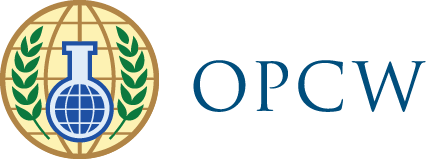The OPCW coordinated a complex and agile international effort for a chemical weapons-free Libya.
Libya asked OPCW and the international community for assistance with destroying its remaining Category 2 chemical weapons from its former chemical weapons programme, 3 February 2016.
The request was prompted by an eroding security environment, the condition of the storage tanks, and concerns about the chemical weapon pre-cursors falling into the hands of terrorists.
Request for Support and Assistance
The Libyan Government of National Accord asked for support and assistance on 16 July 2016 in transporting and destroying outside of Libyan territory these final remnants as soon as possible.
On 20 July 2016, the OPCWExecutive Council requested that the Director-General assist Libya with developing its plan to destroy the chemicals. Two days later, the UN Security Council adopted UNSCR 2298 welcoming and endorsing the Executive Council decision.
International Operation Mounted
In response to Libya’s request, an international operation coordinated by the OPCW was mounted with contributions from Canada, Cyprus, Denmark, Finland, France, Germany, Italy, Malta, New Zealand, Spain, United Kingdom, and the United States to support the timely destruction of Libya’s remaining chemical weapons in the safest and most secure manner.
Three countries – Libya, Denmark, and Germany – took the lead for key elements of the operation (removal, maritime transport, and destruction). The other contributors provided personnel, technical expertise, equipment, information, financial and other resources.
Destruction Operation
On 8 September 2016, the multi-country maritime transportation operation led by Denmark successfully delivered the chemical materials to Germany and marked the beginning of the destruction operation under OPCWverification.
The OPCW verified the completed destruction of these materials at Gesellschaft zur Entsorgung von chemischen Kampfstoffen und Rüstungsaltlasten (GEKA) on 23 November 2017.
Result
The destruction of Libya’s remaining Category 2 chemical weapons in the GEKA facility brought the total amount of the Libyan Category 2 chemical weapons destroyed to 100 per cent. Libya had previously destroyed all of its Category 1 and 3 chemical weapons.
Because of the determination of Libya and the international community supported by OPCWverification, the world can have confidence that these chemicals will never become weapons.
Interviews from officials involved in the operation from 2016-2017. Titles provided reflect positions of interviewees during the operation.
Decisions
| Document Symbol | Title | Date |
|---|---|---|
| C‑22/DEC.8 | Proposal from Libya for a Multi-Year Payment Plan to Regularise its Payment of its Outstanding Annual Contributions | 30 November 2017 |
| EC‑M‑53/DEC.2 | Arrangement Between the OPCW and the Government of Germany Governing On-Site Inspections at the Gesellschaft Zur Entsorgung Von Chemischen Kampfstoffen Und Rustungsaltlasten mbH (GEKA mbH), Munster, and at the Port of Disembarkation in Germany | 26 August 2016 |
| EC‑M‑52/DEC 2 | Detailed Requirements for the Destruction of Libya’s Remaining Category 2 Chemical Weapons | 27 July 2016 |
| EC‑M‑52/DEC.1 | Destruction of Libya's Remaining Chemical Weapons | 20 July 2016 |
| EC‑M‑51/DEC.1 | Destruction of Libya's Remaining Chemical Weapons Stockpile | 24 February 2016 |
| C‑16/DEC.3 | Decision: Extension of the Final Deadline for the Destruction by Libya of its Category 1 Chemical Weapons | 29 November 2011 |



